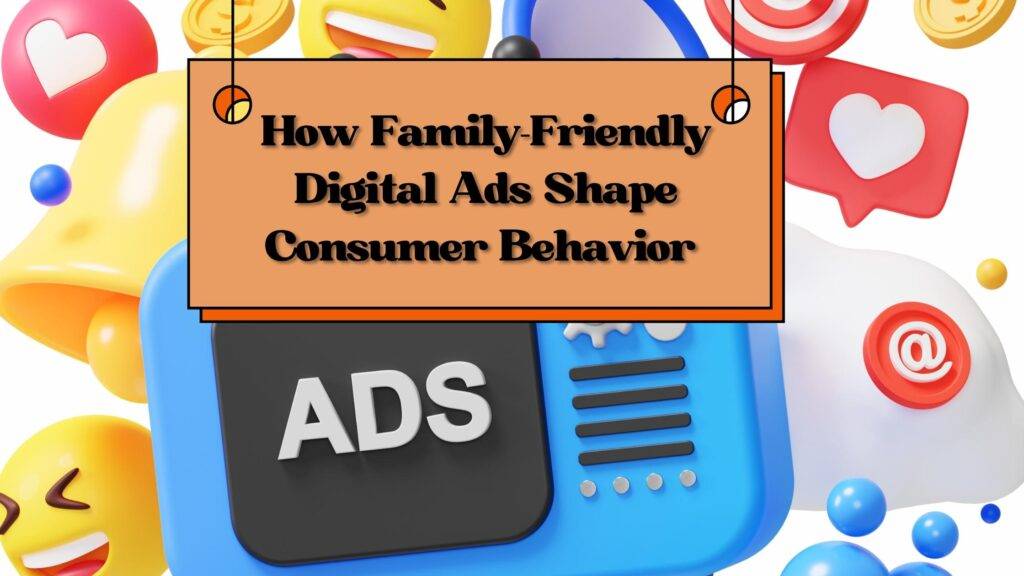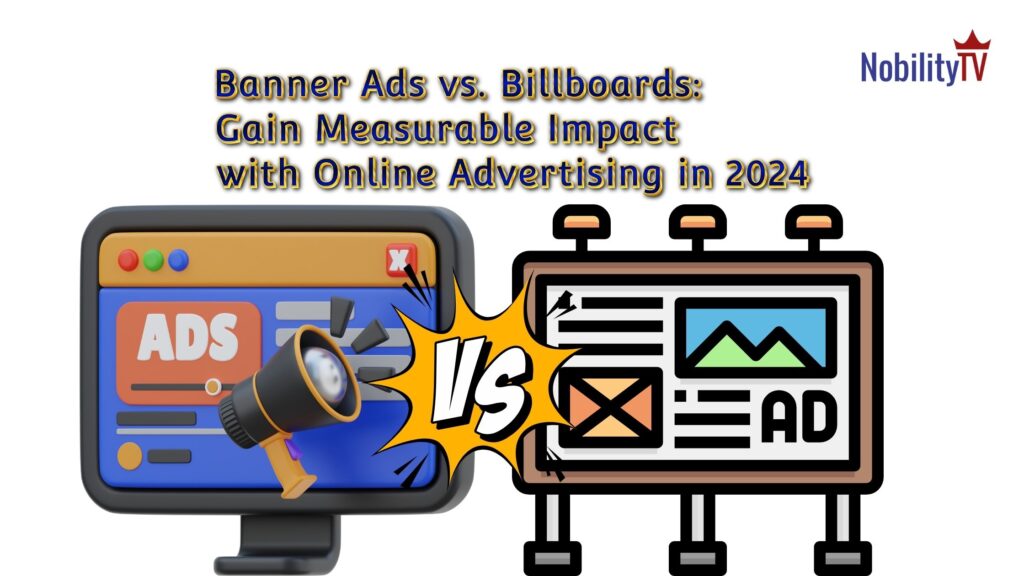
Unlocking Consumer Loyalty: How Family-Friendly Digital Ads Shape Consumer Behavior
In today’s market, the influence of family-friendly digital ads on consumer behavior is undeniable. These ads don’t just sell products—they build trust and resonate with shared values. They reach families in ways that traditional marketing can’t, providing relatable content that parents and children connect with. Understanding these dynamics is key for brands looking to engage effectively with consumers. As brands tailor messages that align with family values, they not only shape purchasing decisions but also foster long-term loyalty. This approach becomes a powerful tool in influencing buying behavior and building brand affinity.
Understanding Family-Friendly Digital Advertising
Digital advertising is everywhere, and as we scroll through our favorite apps, we’re likely to encounter countless ads vying for our attention. But have you ever stopped to ponder what makes an ad family-friendly? This section will unpack the essentials of family-friendly digital advertising, exploring its definition, target audience, and the critical role of family values.
Definition and Characteristics
Family-friendly digital ads are designed to appeal to households without causing offense or controversy. They possess specific traits that ensure they are appropriate for all ages:
- Positive Messaging: These ads focus on positivity, free from inappropriate content or language.
- Engagement for All Ages: They are structured to entertain or attract both parents and children.
- Ethical Considerations: Privacy guidelines and ethical marketing practices are closely followed to protect young viewers.
- Educational Value: Often, there is an educational aspect that parents appreciate, turning ad time into learning opportunities.
For example, companies like LEGO create commercials that inherently provide value beyond just showcasing a product, which can be seen in their family-friendly marketing strategies.
Target Audience
The target audience for these ads is quite specific—you guessed it, families! But what does that mean in terms of demographics?
Families typically include:
- Parents and Guardians: Adults aged 25-45 who make purchasing decisions.
- Children: Kids and teens who influence the family’s consumption patterns.
- Extended Family: Grandparents and other family members can also be part of the target pool.
Understanding these groups’ needs and desires is crucial for advertisers looking to make meaningful connections. A thorough dive into how marketers target different age groups can be found here.
Importance of Family Values
Family values act as the glue holding the fabric of family-friendly ads together. These values are often mirrored in the advertising content to resonate with consumers on a deeper level.
Here’s why integrating family values into advertising campaigns is significant:
- Trust Building: Ads reflecting core family values are more likely to earn the trust of family-oriented consumers.
- Emotional Connection: Tapping into universal emotions associated with family life can foster a stronger bond with the audience.
- Reflecting Social Norms: Ads that highlight positive family interactions showcase socially accepted norms, enhancing their appeal.
Brands that embrace diverse and meaningful family values often see increased loyalty, as noted in articles like Keeping it in the Family.
By understanding these facets of family-friendly digital advertising, you can see why they hold such power in shaping consumer behavior. The next sections will delve deeper into how advertisers leverage these attributes to influence purchasing decisions.
The Impact of Family-Friendly Digital Ads on Consumer Behavior
Family-friendly digital ads have become a cornerstone in shaping consumer behavior. As families surf the online world together, the way brands choose to reach them can create lasting impressions. By focusing on content that appeals to the entire family, brands can foster loyalty, build trust, and engage consumers in meaningful ways.
Building Trust and Loyalty
Family-friendly ads play a vital role in building trust with consumers. These ads often emphasize values like honesty, care, and protection, making families feel understood and valued. When consumers see brands consistently prioritizing family values, they are more likely to trust and remain loyal to these brands. Trust is not just about transparency; it’s about aligning with the audience’s core values, leading to a more committed customer base. This perception can be reinforced further through family-friendly marketing strategies that resonate with these values.
 Photo by RDNE Stock project
Photo by RDNE Stock project
Emotional Connections
At the heart of family-friendly advertising is emotional storytelling. This approach connects brands to their audience by tugging at heartstrings and bridging emotional gaps. By using stories that families can relate to, whether it’s the joy of a birthday or the warmth of a family dinner, brands can create deeper emotional connections with consumers. These emotional stories are not just effective but memorable, making them a potent tool in a brand’s arsenal. Discover more about emotional storytelling in marketing and how it can transform the audience’s perception of a brand.
Consumer Engagement Strategies
Engaging families through digital ads requires a well-thought-out strategy. Successful engagement often involves interactive elements that involve multiple family members. Here are a few strategies:
- Interactive Content: Activities such as quizzes or puzzles can engage both children and adults.
- Inclusive Messaging: Creating content that speaks to all ages ensures broader appeal.
- Seasonal Campaigns: Centering campaigns around holidays can foster a shared family experience.
These strategies not only capture attention but encourage interaction, ensuring the brand remains a part of the family’s conversation long after the ad has disappeared from the screen. For deeper insights, you can explore resources on how advertising shapes consumer behavior.
Family-friendly digital ads are subtle yet powerful tools in shaping consumer behavior. They build layers of trust and loyalty, create emotional bridges, and offer strategies that engage entire families. Through these ads, brands are not just selling products; they are becoming part of family narratives and memories.
Case Studies of Successful Family-Friendly Campaigns
In today’s rapidly-changing digital advertising landscape, family-friendly campaigns have gained immense popularity. By connecting emotionally with parents and children, these campaigns drive consumer behavior and loyalty. Here, we explore case studies of brands that have effectively implemented family-friendly advertising strategies and uncover valuable lessons for marketers.
Brand X: An Overview
Brand X has mastered the art of reaching families with its creative and engaging strategies. By emphasizing values such as family bonding and quality time, they have built strong connections with consumers. Some key strategies include:
- Interactive Content: Brand X uses engaging apps and games that children and parents can enjoy together, fostering positive associations.
- Storytelling: Their advertisements often tell heartwarming stories, highlighting family dynamics and shared experiences.
- Partnerships: Collaborating with family-focused events and organizations has amplified Brand X’s reach and credibility.
These approaches have enabled Brand X to capture the hearts of families and drive lasting consumer loyalty.
 Photo by Valeriia Miller
Photo by Valeriia Miller
Brand Y: Innovation in Advertising
Brand Y consistently pushes the boundaries of innovation in family-friendly campaigns. Their approach focuses on:
- Augmented Reality (AR): By integrating AR into their ads, Brand Y creates immersive experiences that captivate families and encourage interaction.
- Cross-Platform Engagement: They utilize multiple digital platforms, ensuring families encounter their campaigns in diverse settings and formats.
- Educational Content: Recognizing the importance of learning, Brand Y includes educational elements in their ads that appeal to both children and parents.
Brand Y’s innovative strategies have set a new standard for engaging family-friendly advertising.
Lessons Learned from Successful Campaigns
Examining these successful campaigns, brands can glean several key takeaways:
- Emotional Connection: Crafting ads that evoke emotions can create lasting bonds with families.
- Interactive Elements: Engagement is essential; interactive ads are more memorable and shareable.
- Inclusive Content: Consider including educational or value-based content that resonates with both parents and children.
- Cross-Platform Strategies: To maximize reach, it’s crucial to deploy campaigns across multiple channels and formats.
By leveraging these insights, brands can create impactful family-friendly campaigns that resonate with modern consumers. For more detailed insights into crafting successful family marketing campaigns, you may check out articles on Recmedia and Simulmedia.
Challenges in Family-Friendly Advertising
Creating advertisements that appeal to families can be tricky. It’s like walking a tightrope, balancing honesty, ethics, regulations, and commercial needs. Various obstacles make this journey challenging and complex for advertisers striving to reach family audiences.
 Photo by RDNE Stock project
Photo by RDNE Stock project
Navigating Regulations and Standards
Advertising to children involves specific regulations and standards that must be followed. The Federal Trade Commission (FTC) provides guidelines for truth-in-advertising, which ensures that all claims made are accurate and honest. The regulations focus on protecting young audiences from misleading information.
There are several key points that advertisers must consider when targeting children:
- Age Appropriateness: Content should be suitable and understandable for the target age group.
- Transparency: Ads must be clearly identifiable to avoid any trickery or confusion.
- Avoiding Harm: Ensuring that the advertising content does not promote unhealthy or dangerous behaviors.
For additional insights, the Children’s Advertising Review Unit (CARU) provides self-regulatory guidelines which further delineate what is permissible under children’s advertising.
Maintaining Authenticity
Families today crave authenticity in advertisements. This means representing real-life situations and honest portrayals. However, balancing authenticity while meeting commercial needs can be challenging. Advertisers must find ways to connect emotionally with families without resorting to stereotypes or clichés.
To maintain authenticity:
- Tell Real Stories: Creating relatable scenarios in ads can resonate with families and build trust.
- Use Genuine Testimonials: Featuring real family testimonials instead of actors can enhance credibility.
- Promote Positive Values: Families often respond to ads that highlight values like kindness, community, and cooperation.
Balancing Commercial Interests and Family Values
Balancing commercial goals with ethical considerations is like juggling while riding a bicycle—a tricky task indeed. Advertisers strive to achieve success in sales while promoting family values, ensuring that their messages align with ethical standards.
Advertisers need to juggle:
- Consumer Trust: Families prefer brands that are honest and uphold strong values.
- Profit Objectives: While the bottom line is crucial, it should not compromise ethical standards.
- Social Responsibility: Supporting social causes can enhance brand image and build trust among family audiences.
For instance, a campaign like Common Sense Media’s advice on teaching kids to be smart consumers underscores the importance of maintaining a responsible advertising approach.
Each challenge presents a unique test but also an opportunity to innovate and create compelling content that resonates with families. Crafting family-friendly ads involves a delicate balance between engaging content and ethical considerations.
Future Trends in Family-Friendly Digital Advertising
Family-friendly digital advertising is constantly evolving to keep up with the times. With new technologies on the rise and consumer expectations shifting, the world of advertising is set for a transformation. Let’s explore some of the future trends that will shape how brands reach families and engage with them.
The Role of Technology

Photo by Mikael Blomkvist
Emerging technologies are playing a pivotal role in shaping the future of family-friendly digital advertising. Here are some technologies that are likely to have a significant impact:
- Artificial Intelligence (AI): AI has the potential to personalize advertisements like never before. It can analyze family preferences and tailor content that caters specifically to them, making ads more relevant and engaging.
- Augmented Reality (AR): By adding interactive elements to ads, AR can transform the advertising experience. Imagine families exploring products in a 3D space from the comfort of their homes.
- Voice-Activated Platforms: With the increase in smart speakers, voice-activated ads could become more common, allowing families to engage hands-free.
For more insights on how technology can impact family-friendly advertising, check out this article on marketing technology.
Evolving Consumer Expectations
Consumer expectations surrounding family-friendly ads are transforming. Parents today are more concerned about content that not only advertises but also educates and entertains.
- Safety First: There’s a growing demand for ads that ensure a safe environment for kids. Brands must focus on security features and provide content that parents can trust.
- Educational Content: Families are looking for ads that offer value beyond promotion. Ads that incorporate educational elements can capture attention and build brand loyalty.
- Authenticity and Transparency: Consumers expect transparency about what is being advertised and who it’s aimed at. Being clear and honest in advertising can help build trust with family audiences.
To see how consumer expectations are influencing trends, read this article on family-friendly marketing strategies.
By keeping up with these trends, brands can create family-friendly advertisements that resonate with audiences now and in the future.
Conclusion
Family-friendly digital ads hold the power to fundamentally shape consumer behavior by fostering trust and emotional connection. Brands that emphasize safety, positivity, and inclusivity not only resonate with familial values but also engage a wider audience.
Such ads align with consumer preferences for authenticity and personal relevance, encouraging greater brand loyalty. As digital platforms evolve, the potential for these ads to influence purchasing decisions and brand perceptions continues to expand.
Marketers should continue exploring innovative ways to integrate family-focused messaging. This ensures consumers feel valued and understood, ultimately driving both engagement and sales.
Thank you for your time, and feel free to share your thoughts or questions on how family-friendly advertising has impacted your purchasing choices.
Click here to read all of our blogs!



